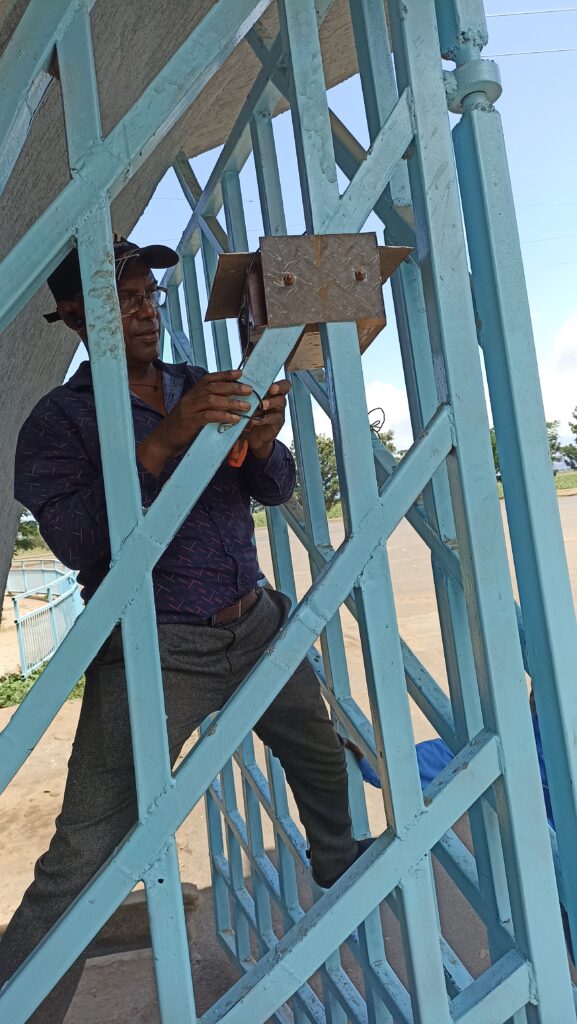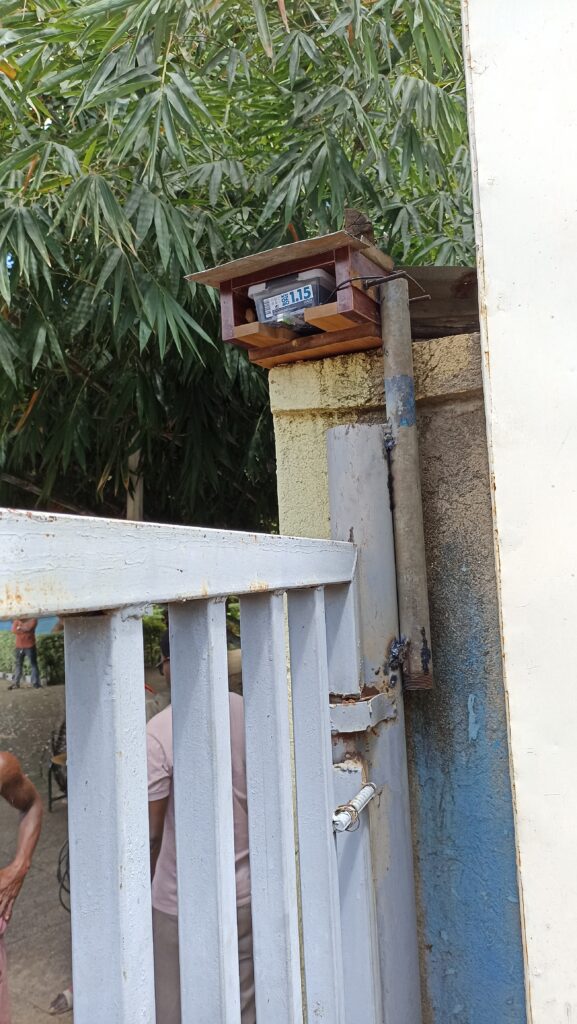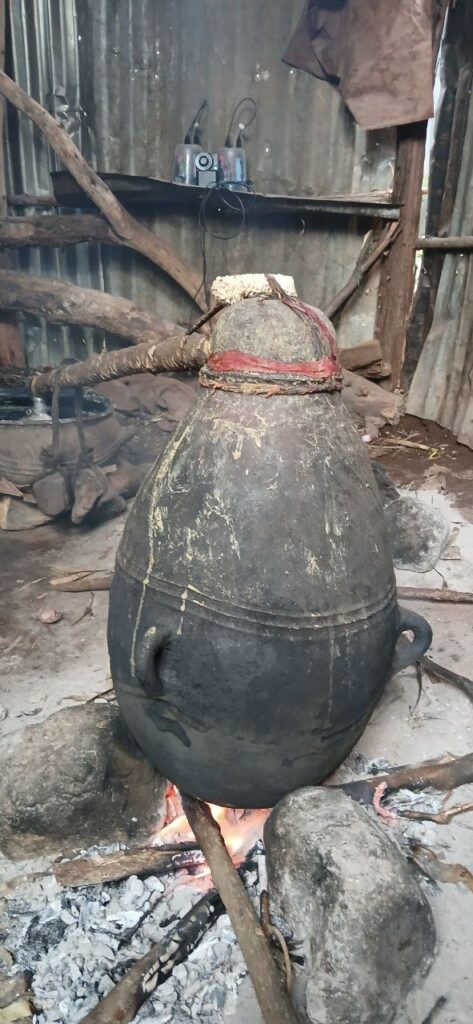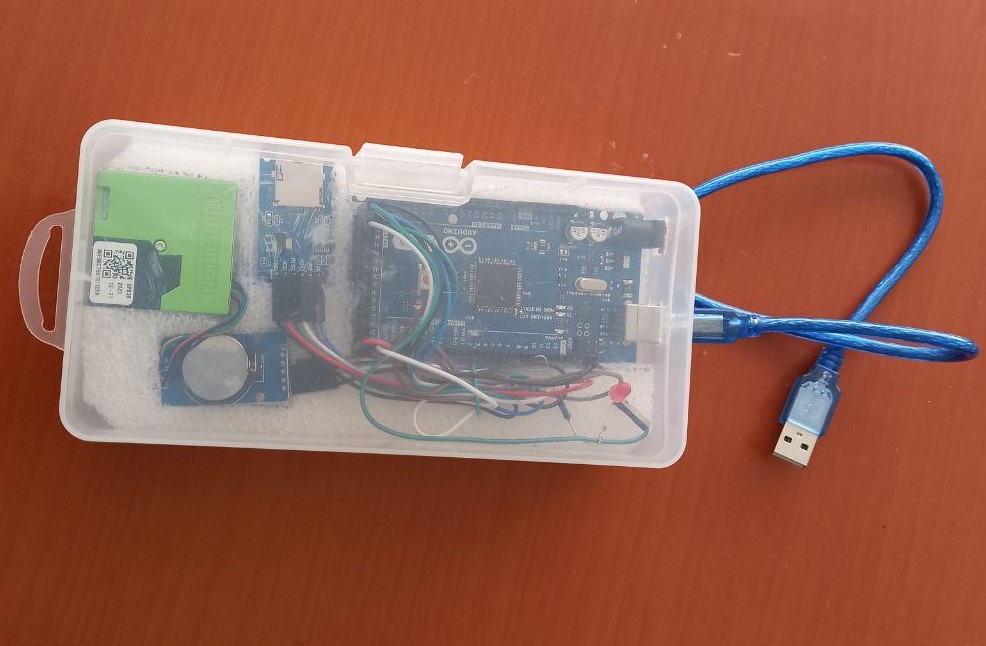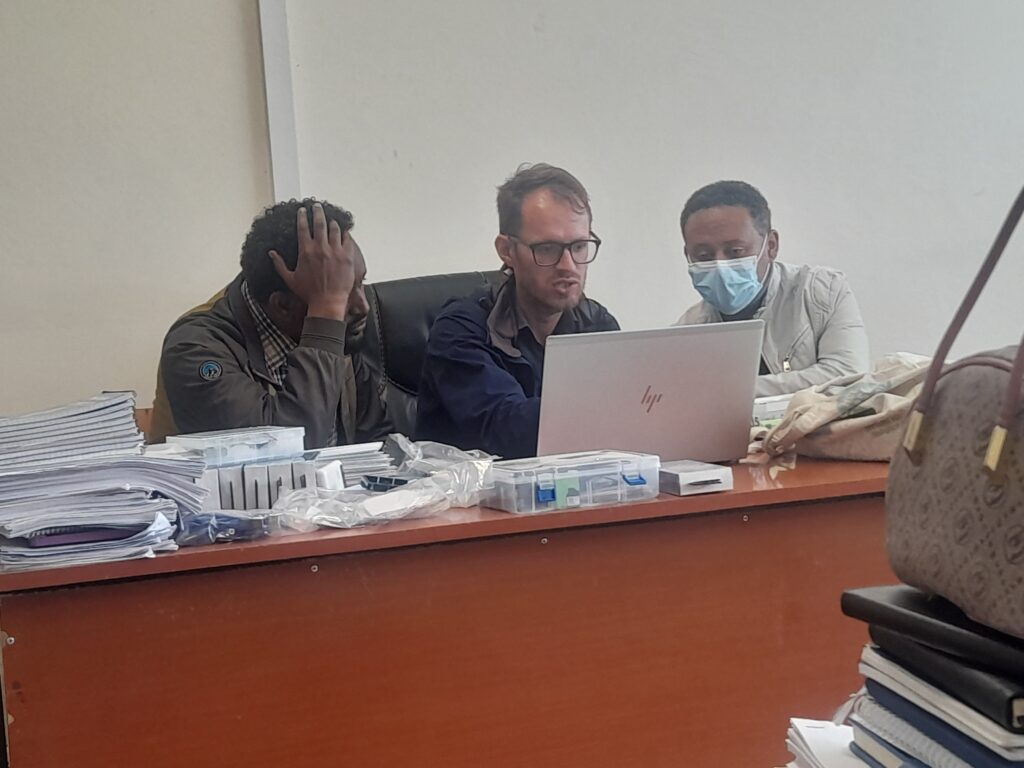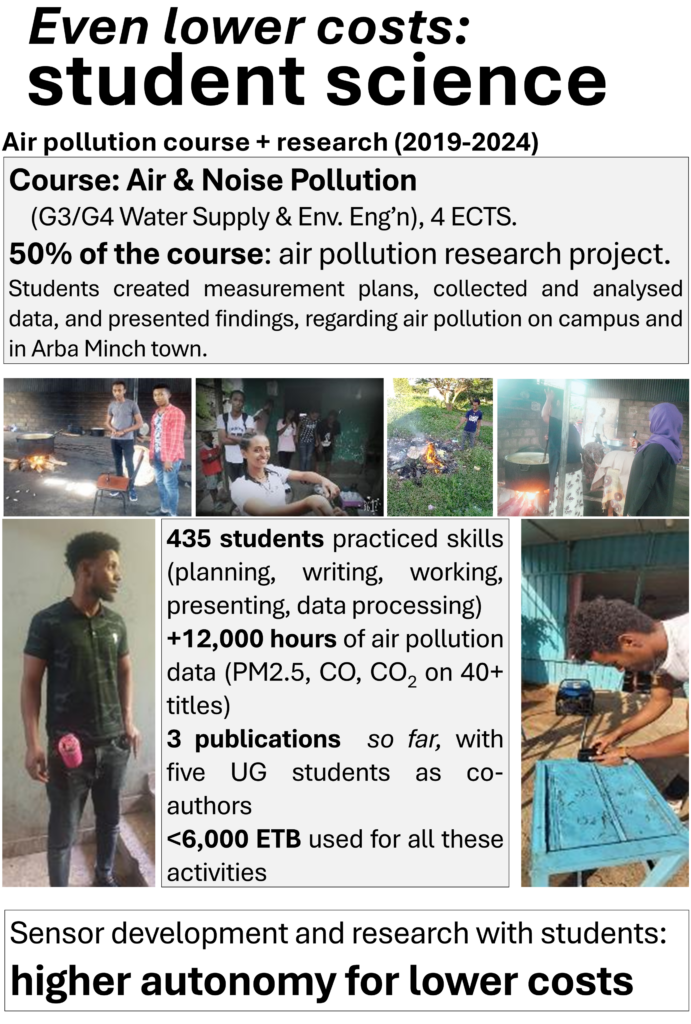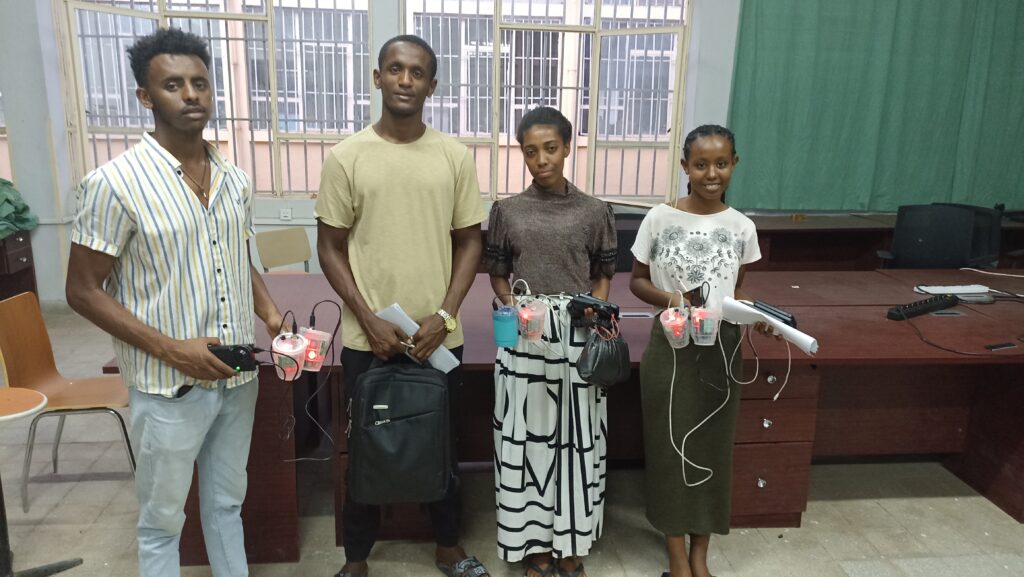I constructed a simple PM and gas sensor system with the Sensirion SEN55 and Arduino. Last year I brought four SEN55 sensors, but until now I did not use them. As part of the 2024/2025 student science pilot project, Firew Deneke and Seguye Shamena plan to let their students study air filtration techniques in chemistry laboratories on Arba Minch University Abaya campus. As part of this, they will use the SEN55 for measurement of PM, VOC and NOx. For this reason, I constructed a very basic sensor system: the SEN55, a DS3231 real time clock, and an SD module for data storage.
The components are all connected to an Arduino Mega microprocessor. I included a green LED to show the status. Jumper wires and a small breadboard connect all components. A lunch box serves as case. This is a low-cost sensor system: the total price of all components combined is approximately 40 euro.
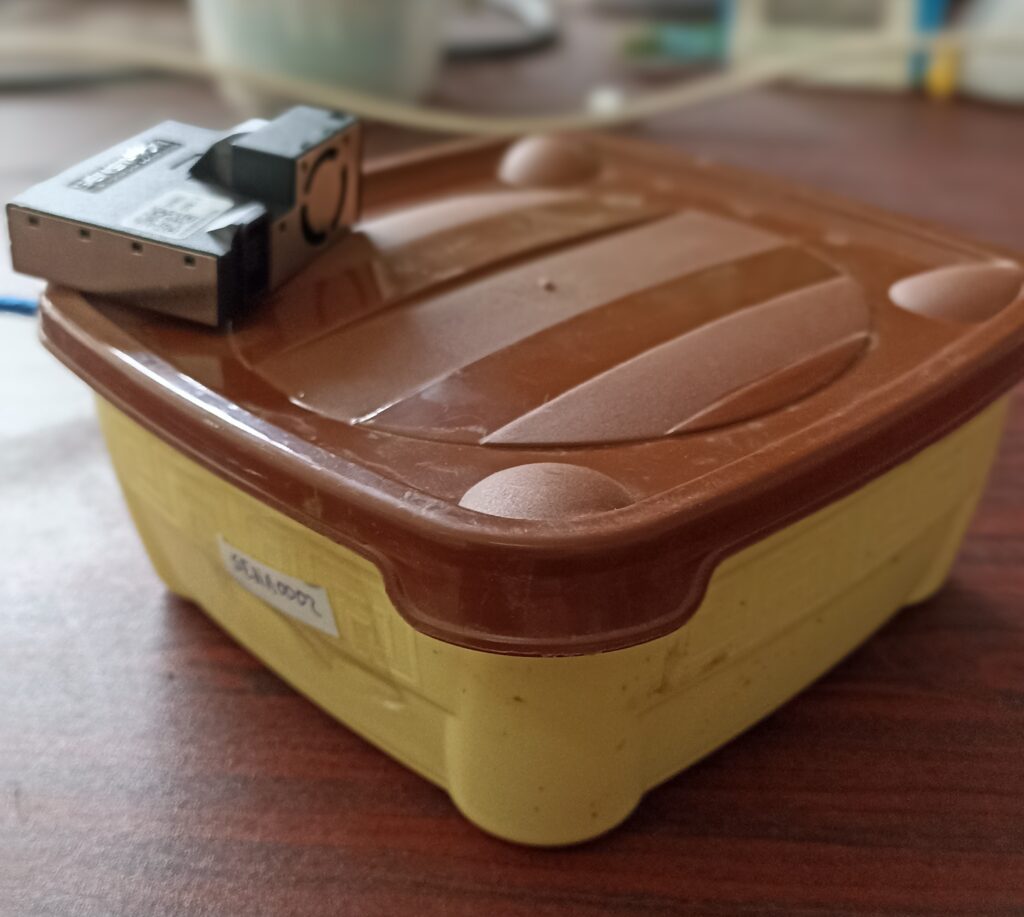
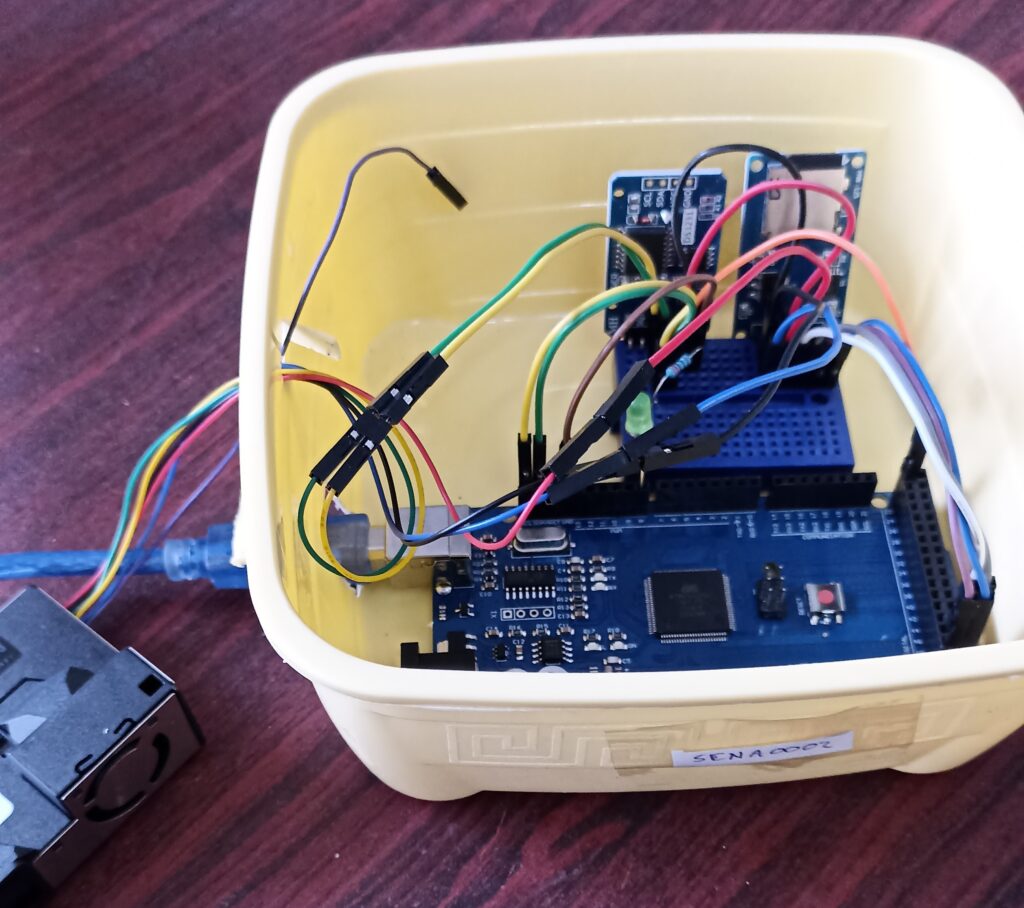
As for software, I programmed the system to write data to the SD card and blink an LED every ten seconds. I shared the software on my GitHub repository. As soon as the system is connected to power, it starts to measure. Apart from PM, VOC and NOx, it also reports temperature and relative humidity.
I have not yet tested the SEN55. For VOX and NOX, there are no reference instruments available. For now, we will have to make do with quality inferences from literature and what the manufacturer provides. As an added quality check, Firew and Seguye will collocate multiple sensor systems together. In that way, at least the intra-correlation can be evaluated.


